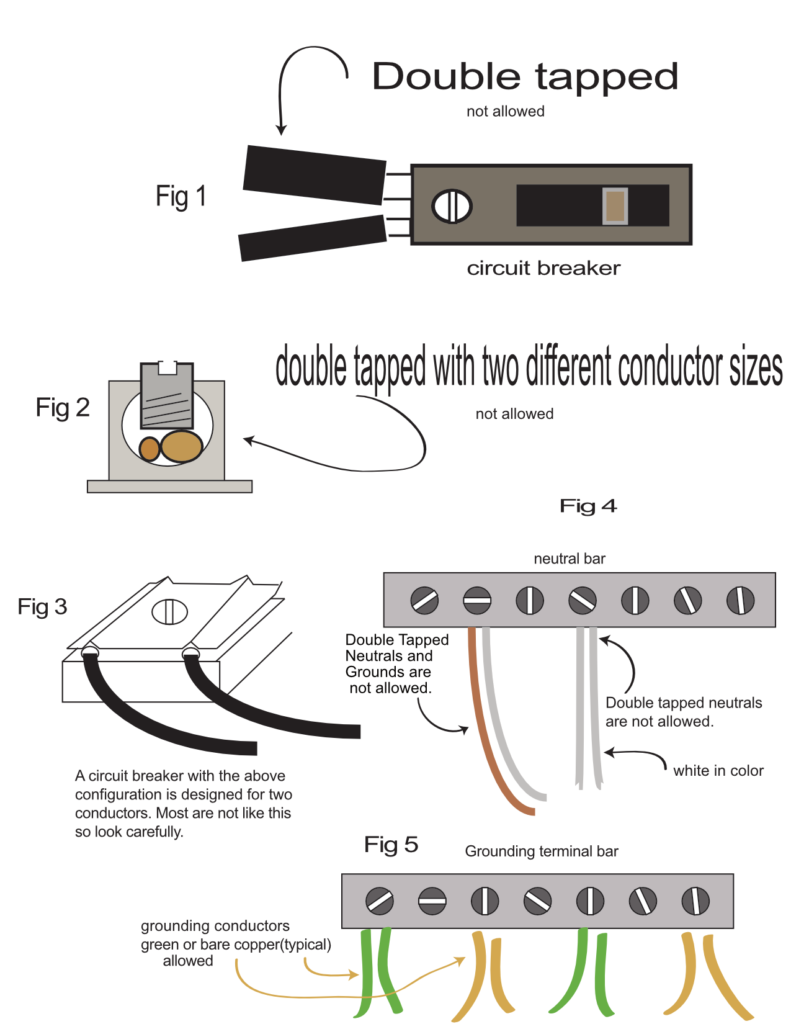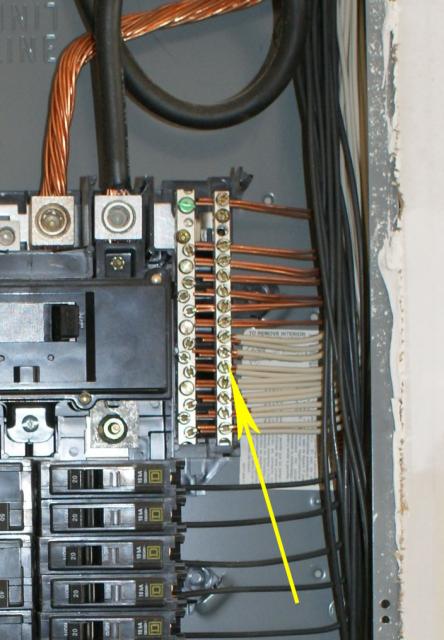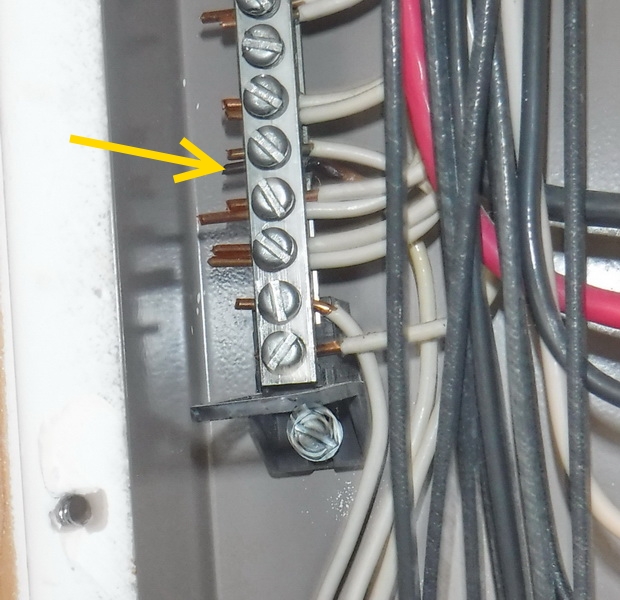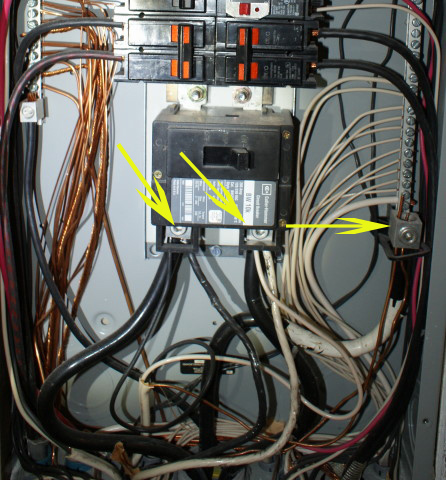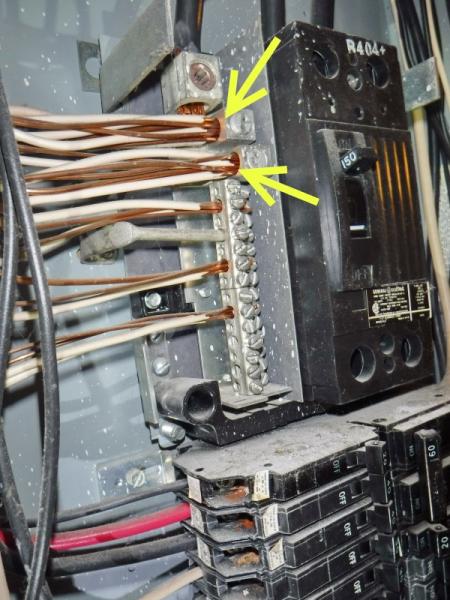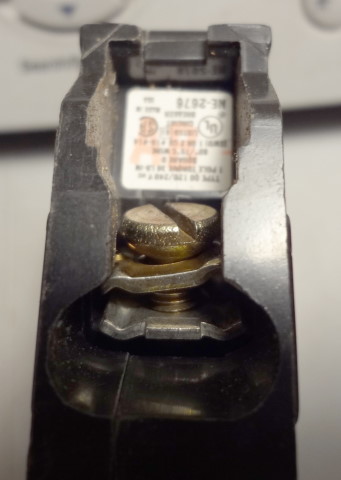A double tap is when there are two conductors under a terminal which is designed for only one conductor. This a safety issue because a terminal designed for one conductor will not exert even pressure on two conductors which means one of them could come loose, arc, overheat, cause a fire etc. When we find a breaker which is double tapped then it is likely that the extra circuit would not have been calculated for the load imposed on the breaker. So the breaker could be overloaded. Study the diagram below.
- Fig 1 Most circuit breakers are not designed for two conductors and this is especially dangerous if the conductors are different gauges.
- Fig 2 shows the uneven pressure exerted on two conductors especially if they are different gauges.
- Fig 3 Some circuit breakers are designed for two conductors…. if they are then the label printed on the breaker will say so.
- Fig 4 Double tapped neutral conductors are not allowed.
- Fig 5 Double tapped grounding conductors are allowed.
- Fig 4 A neutral and a grounding conductor cannot be under one terminal.
Now let’s see what we find out in the field.
Double Tapped Neutrals
Here you can see in the picture above the double tapping of neutrals in the main service disconnect. This is where two wires are under one screw. At the time this house was built the language in the NEC was vague so the practice was quite common. More modern codes prohibit this. In 2002 the NEC clarified the language to prohibit this although it had already been prohibited as part of the UL listing instructions for every panel manufactured since 1965. We here at Blue Palmetto Home Inspection feel that double tapping neutrals is not a good idea because it violates the listing. In many cases there are plenty of holes so it just involves moving the wires to a different hole. We recommend a licensed electrician do this for you.
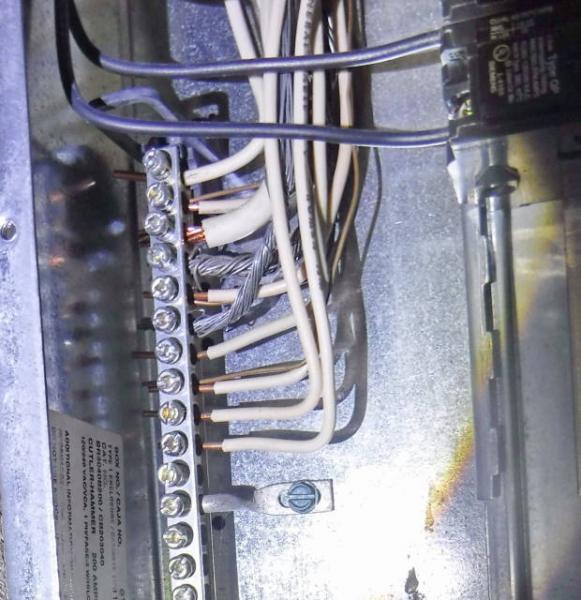
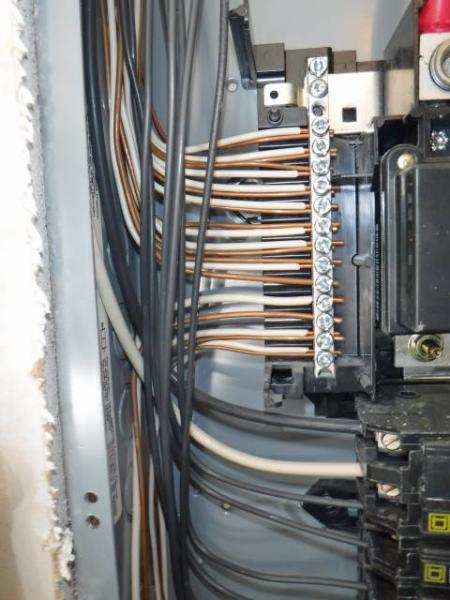
Reference 2009 irc 3706.4, 2011 nec 408.41 Grounded Conductor Terminations.- Each grounded conductor shall terminate within the panel board in an individual terminal that is not also used for another conductor.
The Solution
Often there are enough holes for the other conductors . You’ll just have to find an electrician to move the conductors for you. Sometimes you can pigtail the conductors with a wire nut (or other approved connector) so that only one wire goes to the breaker.

